The Tarot Lineages
Tarot decks fall into one of three tarot lineages: pip decks, esoteric decks, and scenic decks. These lineages are based on the style of illustration and the type of information included in the numbered suit cards of the deck. Each lineage requires a different reading style. By learning the three tarot lineages and their appropriate reading styles, you can more effectively read any deck.
The Major Arcana
The tarot deck is divided into the Major Arcana and the Minor Arcana. The word “arcana” means mysteries or secrets. The Major Arcana consists of 22 cards that form psychological archetypes or spiritual initiatory mysteries. More practically, they represent forces beyond our control or significant influences. The majors often have illustrations based on esoteric symbolism, allegory, and mythology. Identify the Majors by their titles, such as: “The Magician,” “The High Priestess,” “The Empress,” etc. It is possible to buy Majors only decks that consist exclusively of these 22 cards.
How to Read the Major Arcana in All Tarot Lineages
The three tarot lineages discussed here utilize the standard sequence of trump cards, also called the Major Arcana. Although subtleties of symbolism can take you on a deep dive into the uniqueness of each deck, the archetypes of the trump suit ultimately are read the same way for each lineage. As a result, the Major Arcana cards are both the most complex and the easiest.
When starting to learn the Major Arcana, the first step is to consider the basic meaning of the card title. The Emperor rules the empire, the Lovers are in love, the Hermit wanders alone, and so on. Then place that meaning in the context of the imagery on the card to reinforce or modify it. The Empress is in a verdant meadow, so she represents fecundity and creativity. The Emperor is in a barren landscape—perhaps his job is to remain emotionally unswayed by the subjects he rules. By noting the basics of title and image, the card shows you its most straightforward meaning.
Once you are familiar with the Major Arcana using this method, layer on additional symbolism. Most readers find their own understanding of The Fool’s Journey, or the sequence of life events, by meditating on the trump progression. The Fool’s Journey also describes the soul’s progress through life, death, and rebirth.
Rather than looking up the meanings in books, do your own work to plumb the depths of meaning in each card. Research the history of both card and image, learn myths and stories associated with the cards, and through study and meditation, apply the meanings of the qabalistic, astrological, and/or numerological correspondences.
A great way to familiarize yourself with the trumps is to separate them out from the rest of the deck, or use a Majors only deck, to do basic readings.
The Minor Arcana
The tarot’s Minor Arcana consists of 56 cards divided into four suits: Wands, Cups, Swords, and Pentacles. The cards of the Minor Arcana comprise two further subdivisions, the pips and Court cards. The pips are the numbered cards, Ace through Ten. The courts are the cards featuring people, often labeled King, Queen, Knight and Page.
Lineage 1: Tarot de Marseille, Also Called Pip Decks

Pip decks, like playing cards, show only the suit icons (the wands, cups, swords, or disks) on the Minor Arcana. They offer minimal patterns and colors to work with. Aside from a few vines and flowers, they have no scenes or other artistic clues as to their meanings. This is the oldest card style, reaching back to the fifteenth century, when the gentility used cards for playing games. The most common style of pip deck, the Tarot de Marseille, developed in the seventeenth and eighteenth centuries.
Many readers approach the uncomplicated pip-style minors using simple methods. They might memorize standard meanings assigned to the cards. On the one hand, many readers apply modern meanings to historical decks, which works, but inelegantly. However, by learning key words from a historical deck, such as the Etteilla Tarot, the contemporary reader can capture the historicity of the cards. Some readers eschew both word and image. These readers skry (gaze lightly to open the psychic centers) at the patterns on the cards to receive psychic information or intuitive impressions.
The imaginative and creative methods espoused by modern European readers turn a magnifying glass to the visual clues in the cards. Patterns based on minute details in the image, shapes, colors, and layout can reveal practical information and spiritual insight as taught by avant-garde filmmaker Alejandro Jodorowsky. Poet-tarotist Enrique Enriquez inspires poetic associations from personal experience, synchronicities, and “eye rhymes” (visually similar shapes in repeated patterns).
Pip decks respond well to the abstract symbolism of esoteric correspondences, which we’ll discuss in the next section. This system bases meaning on pre-established symbolism, for example, that the tarot suits relate to the four classical elements. It can also extend into the complex correspondences of astrology and qabalah.
Lineage 2: Golden Dawn or Thoth Tarot, Also Called Esoteric Decks

The Golden Dawn Minor Arcana designs are similar to pip decks, featuring simple symmetrical arrangements of the suit icons. However, they incorporate extensive color symbolism and sometimes include sparse, but potent, symbolic details. The Golden Dawn established titles for each card, offering a single keyword or phrase that locates a hub of meaning. The Crowley-Harris-Thoth Tarot, with exquisitely graceful and movingly geometrical artwork by Lady Frieda Harris, introduces “moody pips.”
Moody pips, also called atmospheric pips, are a stepping stone between plain pips and fully illustrated scenic numbered cards. Moody pips use color, a sense of environment, and symbolic details to create an emotional feel unique to each card, without providing the actions, characters, and settings of the scenic decks. Read esoteric decks using established keywords, emotional mood, and layering on qabalistic, astrological, and color correspondences to find meaning.
Correspondences
Correspondences are symbol systems in which one set of standardized symbols relates to another set of information in an organized manner. For instance, the four classical elements, fire, air, water, and earth correlate to the four tarot suits. The result is that the Wands, Swords, Cups, and Disks have not only their own meaning, but add an additional set of meanings based on the element. For example, the symbolism of suit alone produces the meaning of separation or cutting away for swords. By adding in the elemental correspondence, which for the suit of swords is air, we layer on the symbolism of thought and communication. This fascinating approach to understanding the cards starts simply, but evolves into intricate layers requiring extensive study and contemplation.
Qabalah

In addition to the association of the four classical elements to the tarot suits, Hermetic philosophy also applies qabalistic symbolism. Qabalah is an ancient Jewish mysticism, primarily used for textual exegesis of the Hebrew bible. The primary glyph on which qabalistic philosophy depends is the Tree of Life. The qabalistic Tree of Life is a simple line drawing that expresses the entirety of the universe, the process of creation, how the Divine interacts with creation, and how we can climb the Tree to connect with the Divine. Modern Hermeticists overlay traditional qabalistic symbolism onto the tarot. This canvas provides the theme for an ever more complex set of variations.
The tarot pip cards relate to two sets of qabalistic symbols: the four worlds and the ten sephiroth. The four qabalistic worlds outline four steps of creation. These worlds correspond to the four suits. They represent the spiritual (fire – Wands), emotional (water – Cups), mental (Swords – air), and physical (earth – pentacles) levels.
The Tree itself illustrates ten numbered spheres, called sephiroth or enumerations, which correspond to the pips numbered Ace through 10. The ten sephiroth represent more detailed steps in the ladder of creation roughly outlined by the four worlds. They are assigned extensive correspondences including color, number, angels, precious stones, aspects of the personality, and parts of the human body, to name just a few.
By combining these two sets of qabalistic symbols – the four worlds and ten sephiroth – with the pips, each numbered card is assigned one circle on the Tree of Life placed in one of the four worlds of creation. By applying existing qabalistic symbolism (see these posts for more information), the pip cards gain incredible detail of symbolism and mysticism. The result is a rich and heady exploration as the call and response of each set of symbols plays off the other.
Astrology
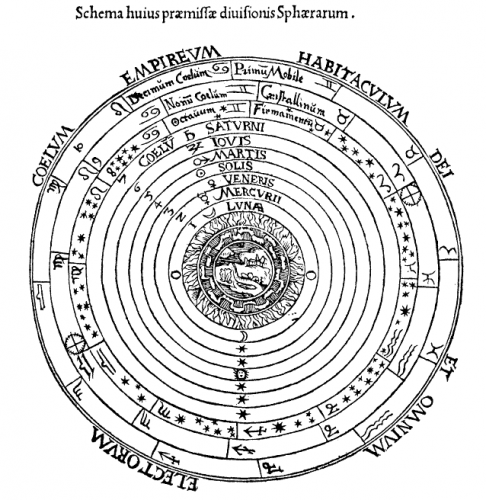
The astrological associations of the tarot derive from two sources: qabalistic correspondences and a classical astrological technique that assigns strength or dignity to the planets. Traditional qabalistic symbolism relates aspects of the cosmos to the ten sephiroth. In this system, the Earth corresponds to the tenth, lowest sphere, then the seven classical planets rise above it, ranked by speed from the quickest, the Moon at the ninth sphere, to the slowest, Saturn at the third sphere. At the second sphere is the zodiac, the backdrop of constellations in front of which the planets move. Above the level of the zodiac, assigned to the highest sphere is the Primum Mobile, the first mover that initiates the movement of the other spheres. The tarot tens correlate to the Earth, the nines to the Moon, and so on in order through the Aces which align with the Primum Mobile. These planetary assignments offer basic but potent general meanings for each group of similarly numbered cards.
In addition, and often contradicting the qabalistic assignments, each numbered card of the Minor Arcana, minus the four Aces, corresponds to a planet and sign. The twelve signs of the zodiac each comprise three equal subdivisions called decans. Each of these 36 decans is ruled by a specific planet. The glyphs for these correspondences are sometimes printed on the borders of the cards, or hidden in the artwork. Interestingly, the planets are empowered in these positions, even if only a little. The planets gain a degree of strength by being in their assigned section of the zodiac sign. This empowerment represents doing the best you can on your own, regardless of whether the circumstances are generally favorable or difficult. Applying this can add a component of bravery to interpretations of the difficult cards.
Who Might Like to Start with a Golden Dawn Style Deck
Esoteric decks are harder to read, take more study, and are considered advanced. However, many people, especially those who love study, structure, and traditionalism, start with Golden Dawn or Thoth decks. Also, if you already know astrology (or the qabalistic Tree of Life), familiar symbolism can offer an easy crossover into tarot. Golden Dawn “cheat sheet” decks provide the correspondences on the cards, reducing the need for memorization
Lineage 3: Waite-Smith, Also Called Illustrated or Scenic Decks
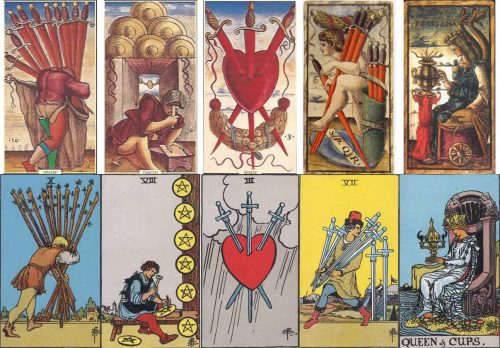
In fully illustrated decks, the Minor Arcana cards show scenes reminiscent of a child’s story book. These are scenes of everyday activities, as opposed to the allegorical or spiritual symbolism of the Major Arcana. The Sola Busca Tarot, an Italian deck from 1491, is the first fully illustrated deck. Pamela Colman Smith, the artist for the twentieth century Rider-Waite-Smith (RWS) tarot deck, viewed a copy of this deck at the British Museum. Its artwork inspired her illustrations.
Most readers recommend approaching an illustrated deck like a story book. However, it’s common for new readers to get caught up in the emotional feel of the image. This results in vague, mushy interpretations. To bring more specificity and clarity to readings, focus on the actions the characters are taking. This identifies the plot of the story, or the sequence of events that will unfold as foretold by the cards. Having a clear vision of the projected trajectory of the situation asked about produces the most empowering reading for the client, giving them the detailed outlook they need to make their own choices as to how to proceed.
To read illustrated pips, start by describing the card. Ask these four questions to get the most detail regarding this card’s contribution to the plot. Who is in the card? What action is the main character taking? Where is the environment? What is the mood?
In addition, look for patterns within a card and between cards to follow the story. This includes, for example, geometric patterns, repeated symbols or characters, or similar or contrasting colors. As you become familiar with the cards, you can add the pip-based or correspondence-based reading styles to your readings
Reading scenic decks is the easiest place to start and most rewarding with the least need for study or memorization.
Bottom Line
Knowing the three tarot lineages provides necessary context for reading the cards. When looking at a new deck, consider what style the deck is. Pip decks, with the least amount of symbolic or illustrative information in the image, derive meaning from the poetic patterns found in the small details of the card. Readers apply qabalistic and astrological correspondences to understand Golden Dawn or esoteric decks. Cheat-sheet decks print these correspondences on the card, reducing the need for memorization. Read fully illustrated or scenic decks like a picture book. To find the plot of the story, ask the four questions, Character? Action? Environment? Mood? More than demanding rules, tarot lineages provide the starting blocks from which to push off. Interweaving reading styles creates complex, nuanced interpretations.
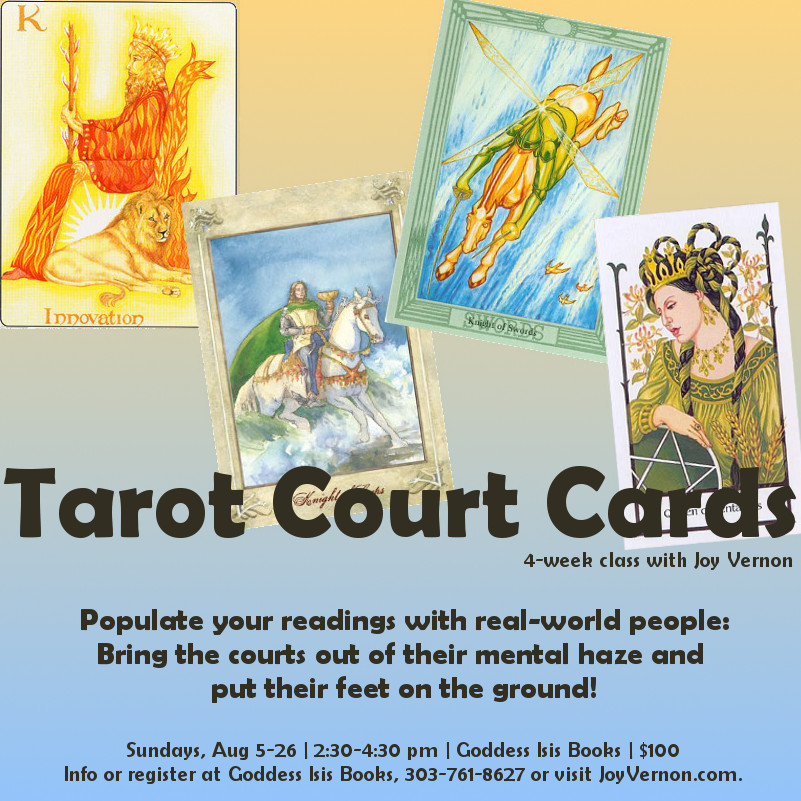

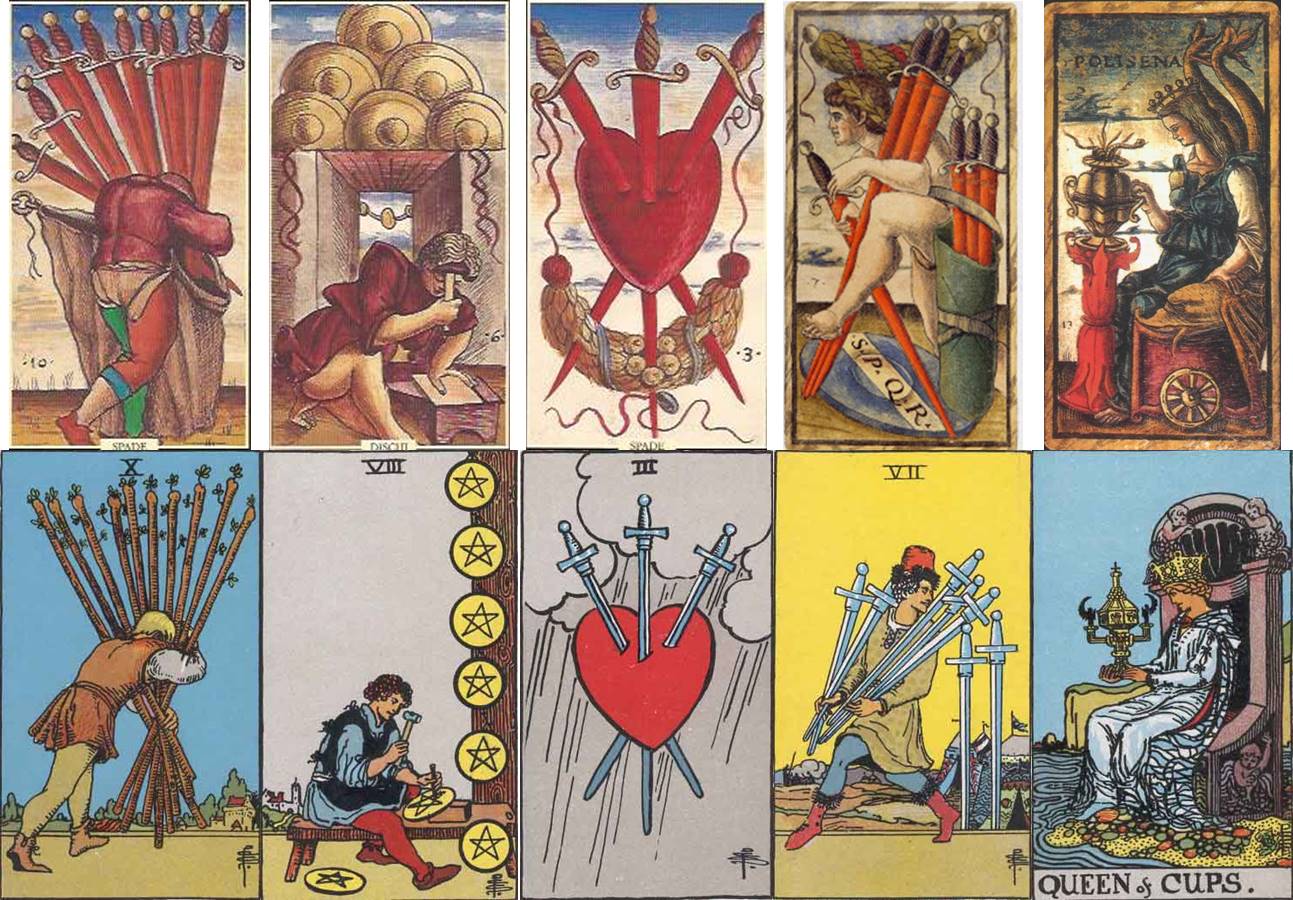
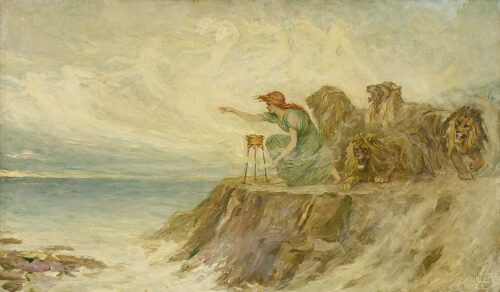




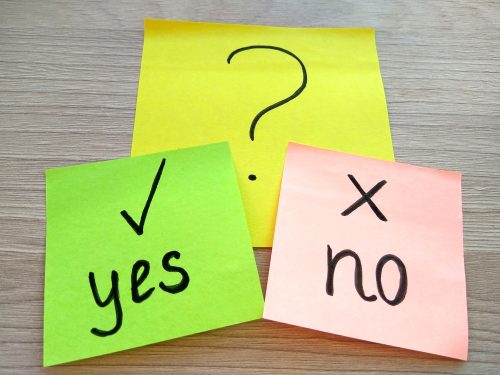
[…] are working with a deck of their own choosing, not the RWS. I do allow decks that follow the RWS lineage of symbolism, just not the RWS itself, or its closest […]
[…] it’s a Minor Arcana card, you can also consider the suit. In relationships, each suit has a particular meaning. Wands […]